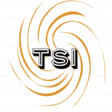Starting April 2024, Google will enforce new guidelines for senders of mass emails to Gmail users. These measures aim to protect users from unwanted emails and enhance sender-side security. In this article, we’ll explore the key changes and implications for email marketers and recipients alike.
New Rules for Sending Mass Email to Gmail Accounts:
Google is set to reject a percentage of non-compliant email traffic starting April 2024. Senders must adhere to new email sender authentication guidelines to avoid message rejections. Google’s approach will be gradual and progressive, with enforcement beginning this month. Bulk senders have until June 1 to implement one-click unsubscribe in all promotional messages.
Impact on Bulk Email Senders:
Bulk emails sent to personal Gmail accounts, totaling at least 5,000 messages per day, will be subject to the new guidelines. Senders must authenticate outgoing emails and avoid sending unwanted or unsolicited content. The 5,000 message limit applies per primary domain, irrespective of subdomains used.
Exemption for Google Workspace Accounts:
While the guidelines apply to personal Gmail accounts, they do not affect messages sent to Google Workspace accounts. However, all senders, including those using Google Workspace, must comply with the new requirements.
What is Google Workspace Accounts?
Google Workspace is a cloud-based suite of productivity tools designed to streamline collaboration and enhance productivity for businesses and organizations. Formerly known as G Suite, Google Workspace includes a range of applications such as Gmail, Google Drive, Google Docs, Google Sheets, Google Slides, and more.
With a Google Workspace account, users can access these tools from any device with an internet connection, allowing for seamless collaboration and communication regardless of location. Whether working on documents, spreadsheets, presentations, or emails, team members can collaborate in real-time, making edits, providing feedback, and sharing files effortlessly.
One of the key benefits of Google Workspace is its integration with other Google services, such as Google Calendar and Google Meet, which enable efficient scheduling of meetings and video conferencing. Additionally, Google Workspace offers robust security features to protect sensitive data, including encryption, two-factor authentication, and advanced threat detection.
Overall, Google Workspace empowers teams to work more efficiently and effectively, fostering collaboration, communication, and innovation in the workplace. With its user-friendly interface and powerful features, Google Workspace is a valuable tool for businesses looking to optimize their productivity and streamline their workflows.
Enhanced Security and Control for Gmail Users:
Google’s measures aim to bolster sender-side security and provide users with greater control over their inbox. By authenticating senders, users can trust the legitimacy of received emails, reducing the risk of phishing attacks. Meeting these requirements should improve message delivery effectiveness while mitigating spoofing and hijacking threats.
Google’s crackdown on mass email senders underscores its commitment to protecting Gmail users from unwanted and potentially harmful content. By enforcing stricter guidelines, Google aims to enhance email security and user experience. Email marketers must adapt to these changes to ensure compliance and maintain effective communication strategies. Ultimately, these measures contribute to a safer and more trustworthy email ecosystem for all users.
Final Thoughts:
As Google implements these new guidelines, both senders and recipients of mass emails should stay informed about the evolving landscape of email security. Adhering to authentication requirements and respecting user preferences for email communication will foster trust and reliability in the digital communication space.
